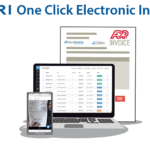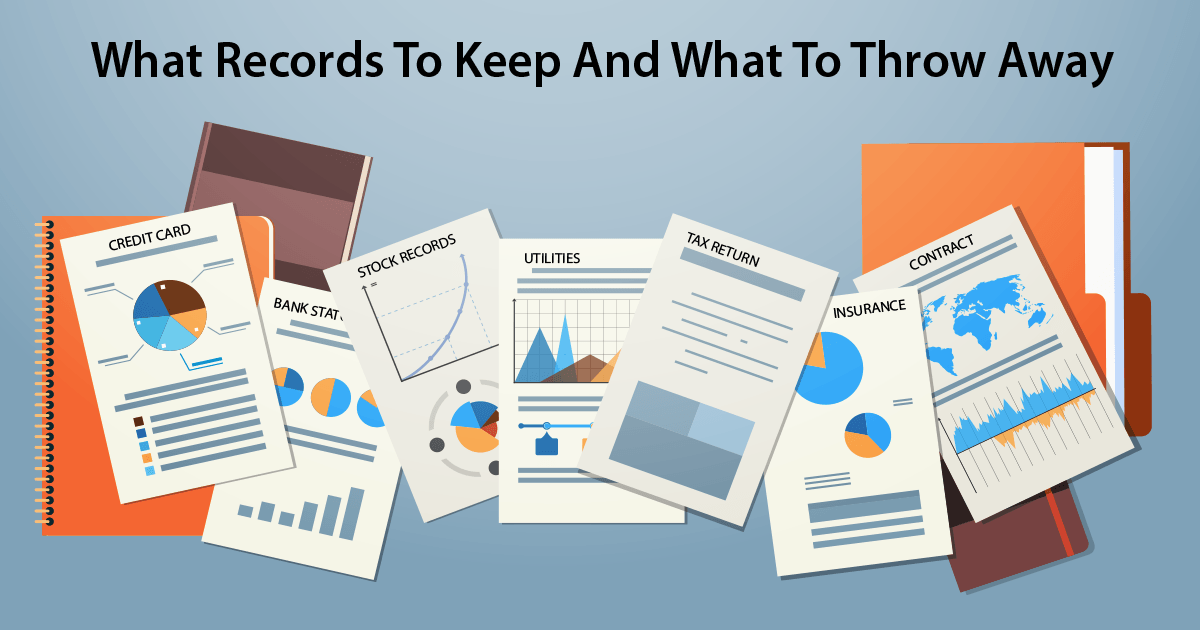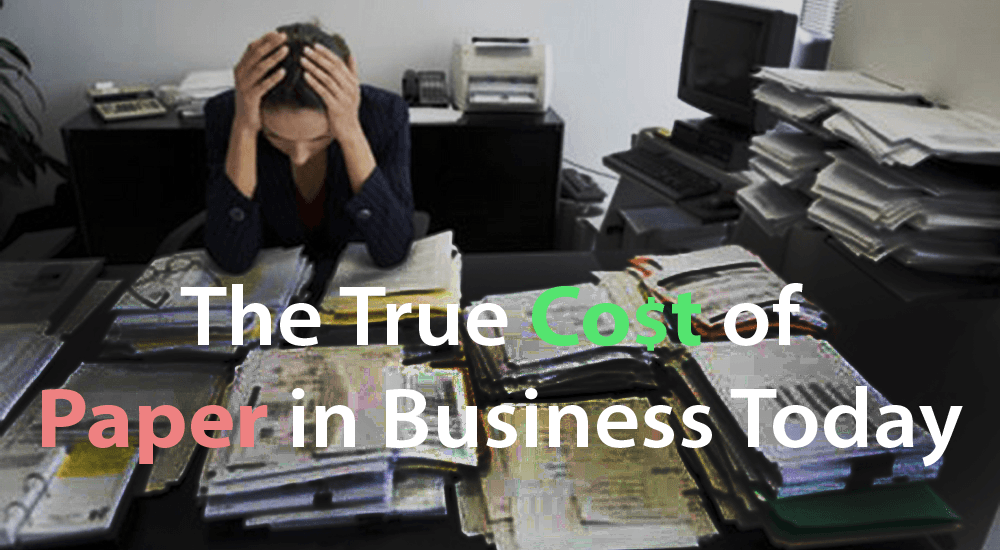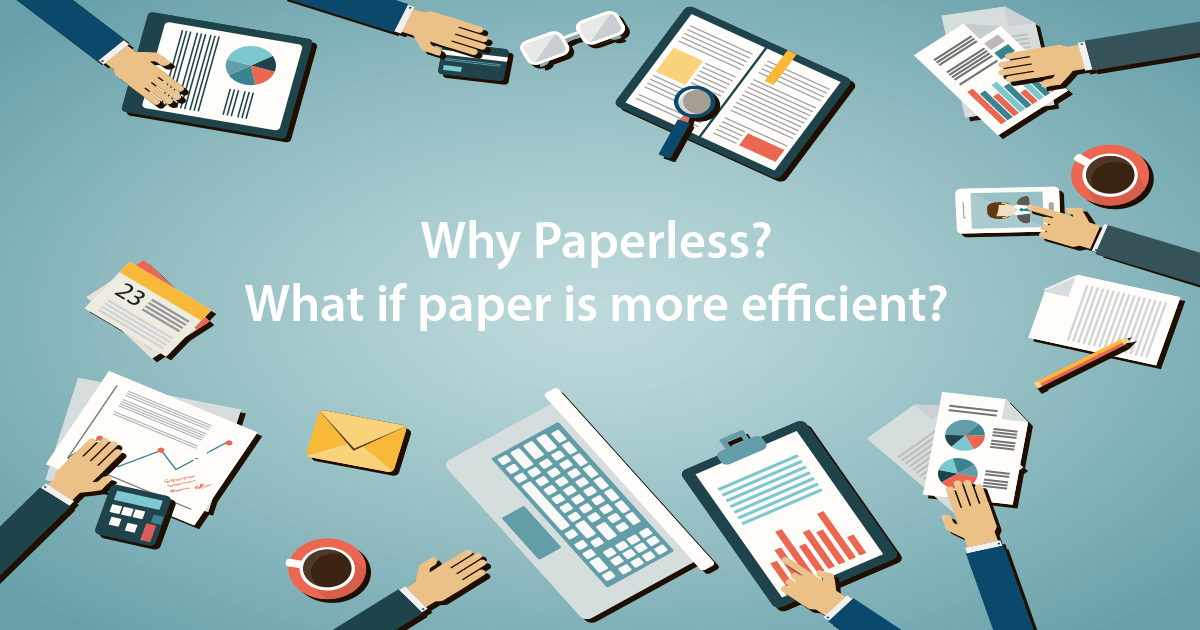
Why Paperless? What if paper is more efficient?
Estimated 3 minutes read time
Download a PDF version of this article
More technology is better, right? If the solution isn’t high-tech, it can’t be good. Doesn’t technology make our lives better? Today’s high-tech business landscape is more challenging than ever before. Everyone is looking for an edge. 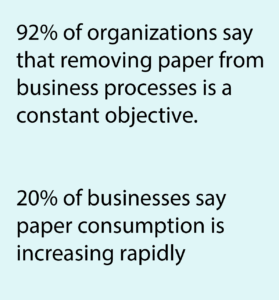 We all seek that one software solution that will change the way we do business, making us more profitable and successful. We assume the answer is hidden within technology.
We all seek that one software solution that will change the way we do business, making us more profitable and successful. We assume the answer is hidden within technology.
I challenge every business owner and manager to ask “Why?” Why do we spend so much time and money evaluating tech solutions? What are we trying to accomplish with technology? Ultimately, the goal we are trying to achieve is “efficiency.” Implementing technology without understanding why will cost time and money. Don’t get me wrong; I am aware that technology is directly responsible for many today’s efficiency improvements. But technology is not the goal; it simply helps us to achieve the goal.
The legend of the paperless office is a good example of failing to ask why. Many businesses have tried to implement a paperless office, only to end up converting their paper mess into a digital mess. The process of creating digital files can create more work and in many cases, decrease the level of communication and efficiency. A paperless office sounds wonderful, but just becoming paperless is a very poor goal. Becoming paperless is a side effect of creating an efficient workflow. If you set out to create a paperless office, you’ll find that there are all kinds of software and gadgets that help you move your paper files to digital files. But just changing out your filing cabinet for hard drives or cloud storage doesn’t automatically make you more efficient.
Why Paperless
The reason we pursue a paperless office is because it is easy to understand. We get the idea of reading files on the computer instead of printed-paper. Process improvements are a lot harder to visualize, but if you are trying to actually become more efficient, improved processes are where you are going to find real gains.
Going paperless can be difficult. Paper is how most people interact with the organizations in their day-to-day lives. Your paper bills come in the mail and you receive paper receipts for your purchases. When it is time to register your car, you receive several pieces of paper from the state government.  The state government uses paper because not everyone has a computer. The incoming paper is one of the reasons most people think of scanners when they start talking about going paperless–they need some way to capture all of the “information” that is sent back and forth. Unfortunately, simply capturing the information does not itself improve the process. A process improvement starts looking at ways to eliminate the paper entirely.
The state government uses paper because not everyone has a computer. The incoming paper is one of the reasons most people think of scanners when they start talking about going paperless–they need some way to capture all of the “information” that is sent back and forth. Unfortunately, simply capturing the information does not itself improve the process. A process improvement starts looking at ways to eliminate the paper entirely.
Less paper can save money and help the environment. Entrepreneur.com reports that the average office worker uses 10,000 sheets of copy paper annually – that’s 2 ½ cases of paper each, and at ~$45 per case, that adds up fast. And all that paper has to go somewhere. On average, a single four-drawer filing cabinet costs $25,000 to fill and $2,000 to maintain for just one year.
Digital files are easier for large numbers of people to access than paper. The cloud is everywhere and cloud-based storage is becoming more accessible. Storing your information in the cloud means employees have access to what they need (not just the documents stored on their computers) wherever they go. Mobile business has never been easier – no need to wait for an agreement to be faxed from the main office, or for a signed document to arrive in the mail. 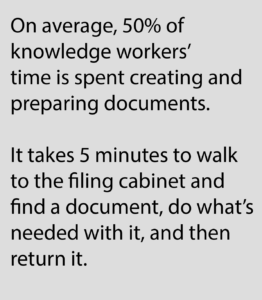 Those days are gone. Digital signatures and instant access to important information mean work is getting done, even when you’re away from the office.
Those days are gone. Digital signatures and instant access to important information mean work is getting done, even when you’re away from the office.
Digital files in the cloud are safe from disasters like hurricanes, fires, and flooding. If a disaster hits your office, your filing cabinets, internal servers, and computers are vulnerable. Can you imagine if you lost all your information? What would happen to your business? Cloud-based storage with redundant backup and encrypted security will keep your information safely.
What if paper is better?
If your business goal is to become more efficient, maybe paper can help? Your business goals should be to reduce the amount of time needed, improve communication, reduce cost, and speed up throughput. If you accomplish these goals, paper is not an issue. If paper helps you save time and money, use it. The name of the game is efficiency. Becoming more efficient will usually have a better environmental impact than the results of a push to go paperless. Creating digital files and securely backing them up can help with your paperless goal but it doesn’t really produce less waste. If you scan and shred, the paper is still there, just in smaller parts. In some situations, it may actually produce more. Shredded paper is less useful for recycling because the fibers have been cut. If you kept a document for 10 years until the information on it is no longer sensitive, you may be able to recycle it in ways that are not possible with shredded documents.
How can paper help improve our business?
Paper makes us feel better. There is something comforting about knowing the original document is available when needed. Having more than one digital copy is not the same as having a paper backup. There is peace of mind knowing the original paper document is safe and secure.
A signature on paper seems more real than a digital signature attached to a digital document. I understand and trust the paper signature. A digital signature is fine in many cases, but it leaves a small doubt in the back of your mind. How do I know the digital association between my signature and a document was correctly stored? Was there a software glitch that attached my signature to another document?  If there is a dispute, I want to see the original paper document with my signature. Don’t show me a copy of my signature and explain how it was saved at the same time as a digital document.
If there is a dispute, I want to see the original paper document with my signature. Don’t show me a copy of my signature and explain how it was saved at the same time as a digital document.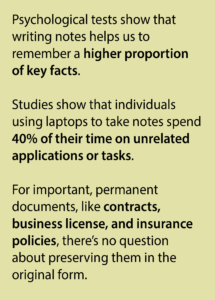
Have you ever wished you still had a copy of a receipt? You know you purchased an item and didn’t receive it or you question if that is how much you really paid. If you could only find the original paper receipt to confirm what happened, all would be good. Your bank statement or digital record just doesn’t cut it. We trust the paper document because we believe it can’t change. No one hacked the system or changed the information without you knowing. The paper document was my snapshot in time that recorded the event.
I am a compulsive note taker. I start my day by creating a to-do list and I take notes throughout the day. My paper notebook helps me to be more efficient and it is my journal. I have tried dozens of note apps and software solutions, from Evernote to Word Documents. But the good-old notebook remains my preferred solution. It is convenient, efficient, and the act of writing things down helps me remember. I am not saying a paper notebook is a perfect, but I haven’t found a better solution.
From our notebooks to receipts, sometimes paper is simply better. Or at least, it makes us feel better. Maybe it is all psychological and emotional but paper can provide comfort and trust that digital files cannot.
Here are a few more reasons to use paper in your business:
- Writing notes on paper is quicker. You don’t need to load an app or start your computer.
- Doodling is easier on paper. A picture says Doodling is easier on paper. A picture says a 1,000 words, even if it’s drawn.

- Fewer distractions. Let’s face it, your phone and computer have a lot going on.
- It’s more personal. My notes are my notes, and my letter to you is only for you.
- You will remember it longer if you write it down. Studies have shown, writing on paper helps us to remember.
- You can write whenever and wherever. It’s hard to imagine, but the world does continue without the internet.
- If you need someone to provide information quickly, it’s just easier to write it down.
- Paper can travel. Manufacturers often use paper travelers to capture information and signatures as an item moves from one location to another.
- If you need a wet signature. Signing on paper feels more legitimate than a digital signature.
- It is automatically saved. Don’t worry about selecting ctrl+s
- Paper requires no training or expensive equipment
- It’s simple
 Business Process
Business Process
Optimization for companies
of all sizes
XTIRI is online cloud-based storage with highly sophisticated organization and search capabilities. You can use any web-enabled device (phone or computer) to scan paper documents, capture the data on those same paper documents, collect signatures – both wet and digital, run reports, and connect that data to QuickBooks or ADP. This technology can be immediately implemented and used to bridge the ever-growing gap between your paper process and the digital data you rely on to run your business. XTIRI doesn’t require fancy equipment or extensive training, and it can be used to automate existing processes.
XTIRI helps companies bridge the gap between their old paper processes and the valuable data stored on their documents. We provide digital image storage for paper documents, photos, receipts, and contracts. Our system allows businesses to harvest, analyze and report on valuable data while maintaining the original paper source of information, including the wet signatures. If you deal with multiple sources of data collection or processes that use both paper and digital inputs, XTIRI can help you automate and manage your workflow.
Download a PDF version of this article
Visit www.xtiri.com
or
Call us at 1.877.505.9140




